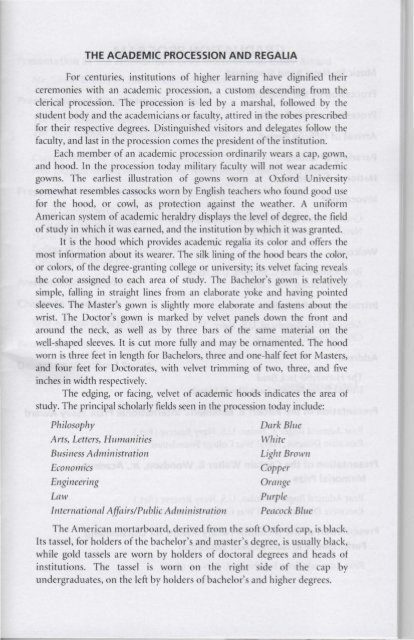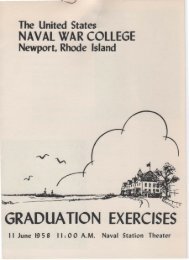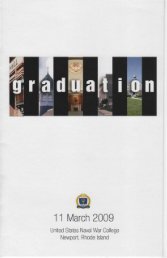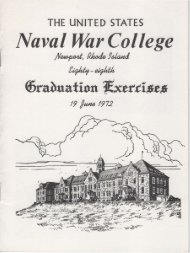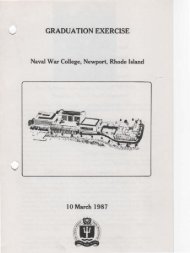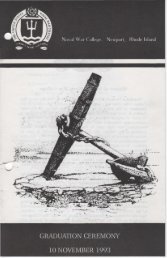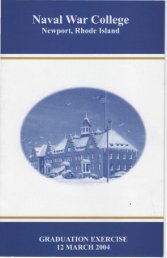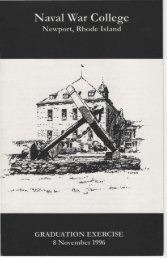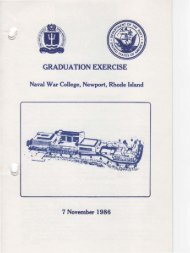Create successful ePaper yourself
Turn your PDF publications into a flip-book with our unique Google optimized e-Paper software.
THE ACADEMIC PROCESSION AND REGALIA<br />
For centuries, institutions of higher learning have dignified their<br />
ceremonies with an academic procession, a custom descending from the<br />
clerical procession. The procession is led by a marshal, followed by the<br />
student body and the academicians or faculty, attired in the robes prescribed<br />
for their respective degrees. Distinguished visitors and delegates follow the<br />
faculty, and last in the procession comes the president of the institution.<br />
Each member of an academic procession ordinarily wears a cap, gown,<br />
and hood. In the procession today military faculty will not wear academic<br />
gowns. The earliest illustration of gowns worn at Oxford University<br />
somewhat resembles cassocks worn by English teachers who found good use<br />
for the hood, or cowl, as protection against the weather. A uniform<br />
American system of academic heraldry displays the level of degree, the field<br />
of study in which it was earned, and the institution by which it was granted.<br />
It is the hood which provides academ.ic regalia its color and offers the<br />
most infornlation about its wearer. The silk lining of the hood bears the color,<br />
or colors, of the degree-granting college or university; its velvet facing reveals<br />
the color assigned to each area of study. The Bachelor's gown is relatively<br />
simple, falling in straight lines from an elaborate yoke and having pointed<br />
sleeves. The Master's gown is slightly more elaborate and fastens about the<br />
wrist. The Doctor's gown is marked by velvet panels down the front and<br />
around the neck, as well as by three bars of the same material on the<br />
well-shaped sleeves. It is cut more fully and may be ornamented. The hood<br />
worn is three feet in length for Bachelors, three and one-half feet for Masters,<br />
and four feet for Doctorates, with velvet trimming of two, three, and five<br />
inches in width respectively.<br />
The edging, or facing, velvet of academic hoods indicates the area of<br />
study. The principal scholarly fields seen in the procession today include:<br />
Philosophy<br />
A rts, Letters, H lll11l1l1ities<br />
BlIsilless Adll1illistratioll<br />
Ecollomics<br />
Ellgilleering<br />
Law<br />
lllternatiollal Affairs/Public Adlllillistratiol1<br />
Dark Bille<br />
White<br />
Light BrowlI<br />
Copper<br />
Orallge<br />
PlIrple<br />
Peacock Bille<br />
The American mortarboard, derived from the soft Oxford cap, is black.<br />
Its tassel, for holders of the bachelor's and master's degree, is usually black,<br />
while gold tassels are worn by holders of doctoral degrees and heads of<br />
institutions. The tassel is worn on the right side of the cap by<br />
undergraduates, on the left by holders of bachelor's and higher degrees.


